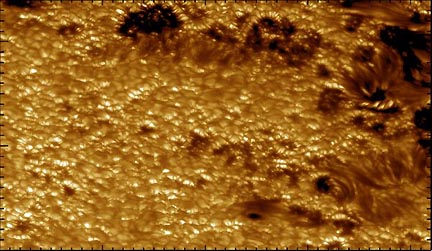
July 16, 2003 Palo Alto, California - At the recent American Astronomical Society's Solar Physics Division meeting in Laurel, Maryland, solar physicists from Lockheed Martin Solar and Astrophysics Lab (LMSAL) at the company's Advanced Technology Center in Palo Alto, California, along with other European scientists, presented the highest resolution images ever taken near the visible edge of the sun.
Click here to subscribe and get instant access to read this report.
Click here to check your existing subscription status.
Existing members, login below:
© 1998 - 2024 by Linda Moulton Howe.
All Rights Reserved.

